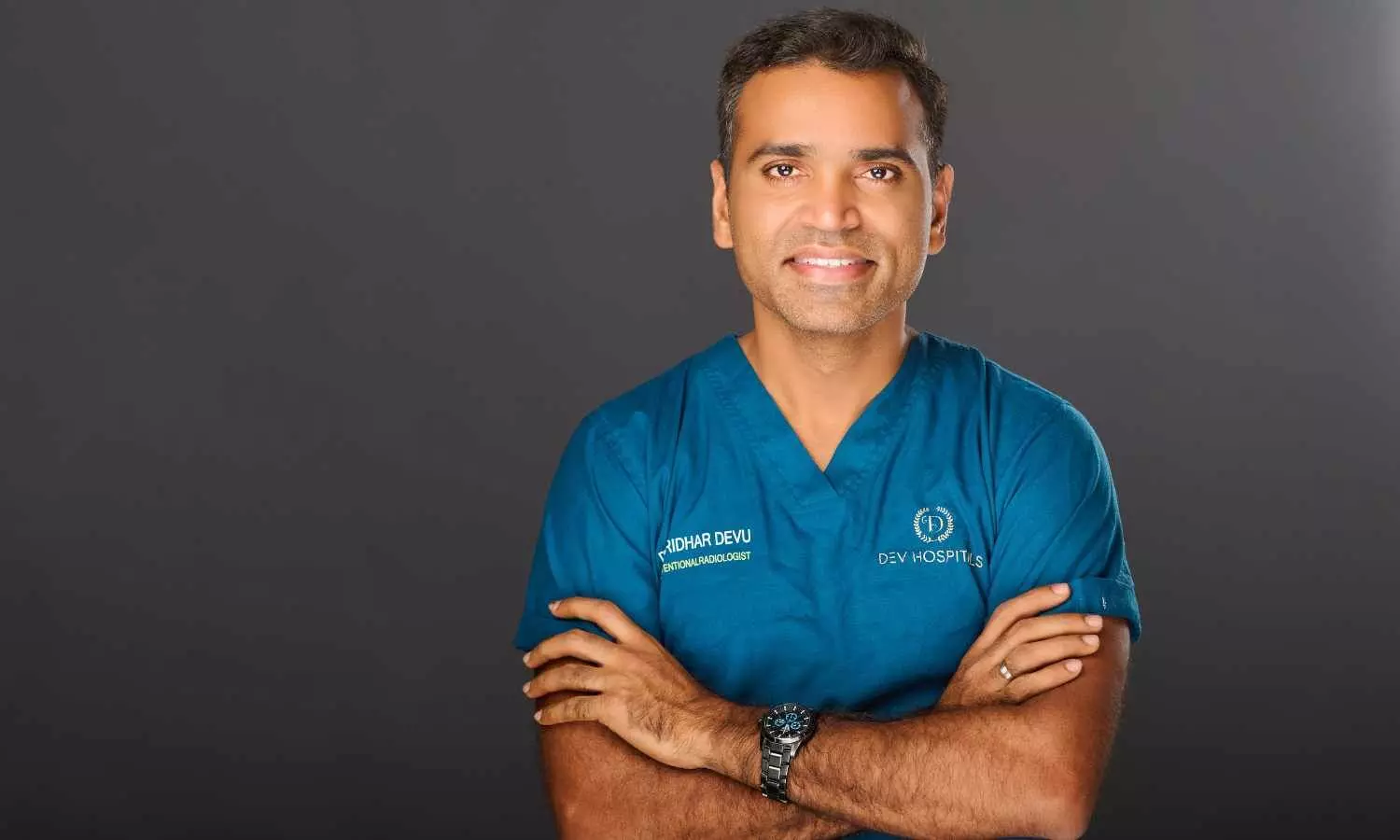Revolutionising Vascular Care: Exclusive Talk on Varicose Veins with Dr Sridhar Devu (DMRD, DNB, MD, FRCR, PDCC, AMPH), Endovascular Interventional Radiologist
Exclusive medical insights on varicose veins with Dr. Sridhar Devu, leading Endovascular Interventional Radiologist. Learn symptoms, risks, and latest minimally invasive treatments for vascular health.
Revolutionising Vascular Care: Exclusive Talk on Varicose Veins with Dr Sridhar Devu (DMRD, DNB, MD, FRCR, PDCC, AMPH), Endovascular Interventional Radiologist

Dr Sridhar Devu is a leading Interventional Radiologist with over 18 years of experience in minimally invasive, image-guided treatments. He specialises in Varicose Veins, Varicocele, Fibroids, Prostate Conditions, and DVT, offering precise care with minimal recovery time. An alumnus of Mamata Medical College and the National Board of Examinations (DNB – Radio Diagnosis), Dr Sridhar is renowned for his patient-focused approach. At Go Vascular, a premier centre for Endovascular and Interventional Radiology, his expertise in Varicose Vein Glue Treatment has made him one of Hyderabad’s most trusted specialists.
In his words:
Varicose veins are often misunderstood as a cosmetic concern, but in reality, they are a medical condition that can have serious consequences if neglected. Many people tend to ignore the initial signs—like swelling, pain, heaviness in the legs, or visible twisted veins—assuming they will go away on their own. However, if left untreated, varicose veins can lead to severe complications such as spontaneous bleeding, skin thickening, discolouration, ulcers, and in advanced cases, deep vein thrombosis (DVT), which can be life-threatening.
Early detection is absolutely crucial. When patients seek medical advice at the right time, the condition can be managed effectively with minimal intervention. The good news is that today’s treatment options are far superior to what they used to be. Traditional open surgeries, which involved large incisions and long recovery periods, have now been replaced by minimally invasive procedures that are safer, quicker, and more comfortable.
At Go Vascular, we use cutting-edge techniques such as laser therapy, glue therapy, and interventional radiology, which allow us to treat varicose veins precisely and painlessly. These advanced procedures are performed through tiny punctures rather than large cuts, making them virtually scar-free. Most of these treatments take less than an hour to complete, and patients are usually discharged the same day, allowing them to return to their routine almost immediately.
One of the key advantages of these procedures is their affordability and accessibility. Earlier, patients hesitated to undergo surgery due to high costs and prolonged hospitalisation. Now, with minimally invasive treatments, hospital stays are shorter, anaesthesia requirements are minimal, and post-operative care is simplified. This reduction in overhead costs makes treatment far more economical and accessible to middle-class families.
However, medical treatment alone is not enough. I always stress the importance of lifestyle modifications to both prevent and manage varicose veins. Maintaining a healthy weight, engaging in regular physical activity, avoiding prolonged standing or sitting, and steering clear of smoking and alcohol are vital steps. These changes improve blood circulation, strengthen vein walls, and reduce the risk of developing varicose veins or worsening existing ones.
Understanding the stages of the disease is another crucial aspect. In its early phase, patients might only experience mild swelling, itching, or discomfort. If diagnosed at this stage, lifestyle changes and simple treatments can yield excellent results. But as the condition progresses, veins become more dilated, and complications such as ulcers and pigmentation may occur. Hence, awareness and timely intervention are key to preventing long-term damage.
The evolution of interventional radiology has transformed the way we treat vascular conditions. Using advanced imaging guidance, we can now identify the affected veins accurately and treat them directly without resorting to open surgery. This ensures minimal trauma, faster recovery, and better aesthetic results.
Apart from medical and clinical benefits, these procedures also offer economic efficiency. Since patients don’t need long hospital stays or intensive aftercare, overall treatment costs are significantly reduced. The process is convenient, efficient, and designed to minimise disruption to the patient’s daily life.
My final message is simple—don’t ignore varicose veins. Early diagnosis, awareness, and modern treatment can make a world of difference. Today’s advanced, minimally invasive techniques can effectively treat or manage the condition, allowing patients to live pain-free and confidently. By combining timely medical intervention with lifestyle discipline and patient education, we can ensure long-term vascular health and a better quality of life for everyone.
Dr. Sridhar Devu is a highly experienced Interventional Radiologist with over 18 years of expertise in minimally invasive procedures. He specializes in treating Varicose Veins, Varicocele, Fibroids, Prostate Conditions, and Deep Vein Thrombosis (DVT) using advanced, image-guided techniques. He completed his MBBS from Mamata Medical College and pursued his DNB in Radio Diagnosis from the National Board of Examinations. Dr. Devu is widely recognized for his patient-centric approach, ensuring precise diagnosis and effective treatment with minimal recovery time.
Go Vascular a leading center for Endovascular and Interventional Radiology, providing top-notch medical care. His expertise in Varicose Vein Glue Treatment has made him one of the most sought-after specialists in Hyderabad.
Watch his exclusive talk with hmtv on:

